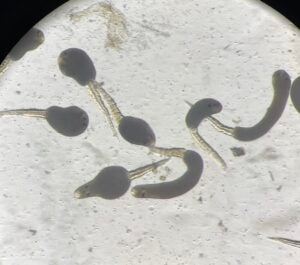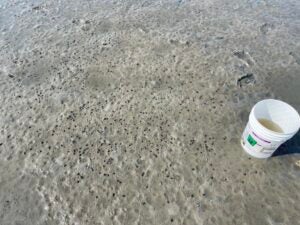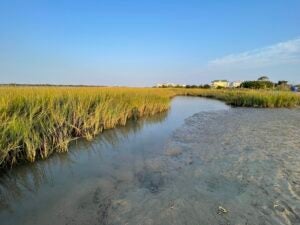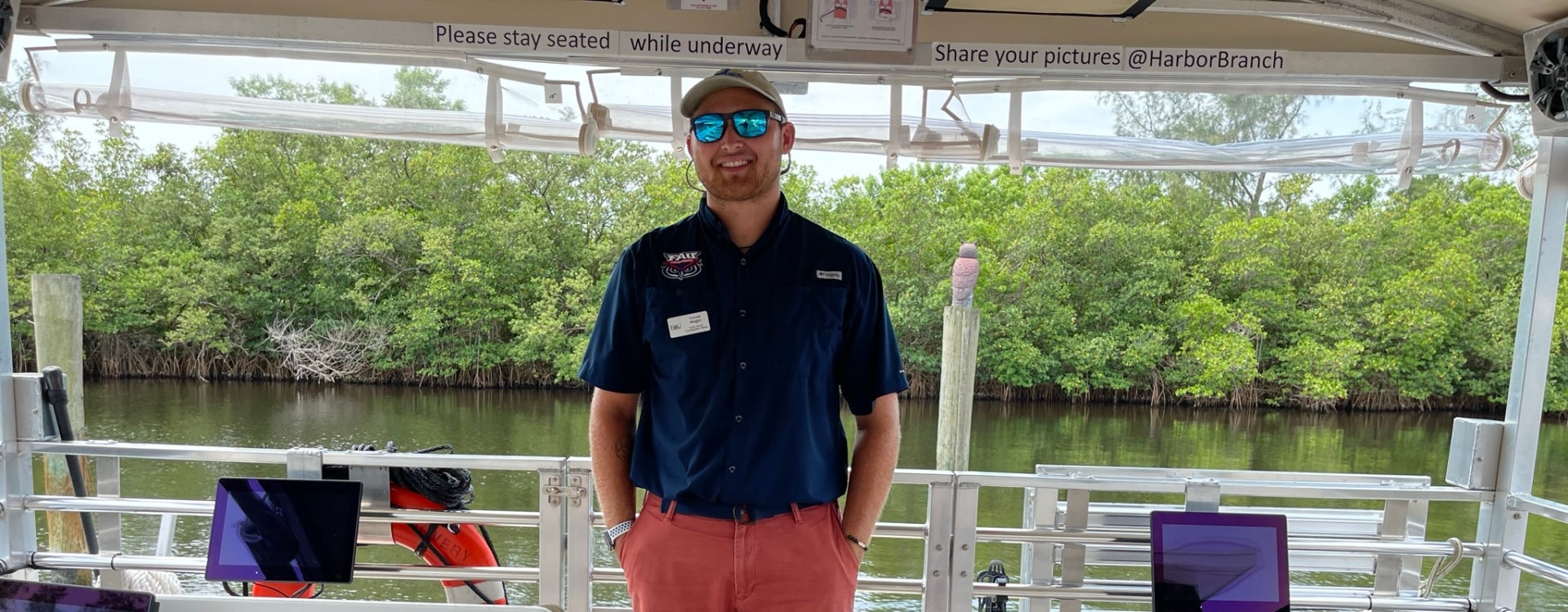Water Scholar Awardee Fall 2023: Garrett Maggio
“The Effect of Fragmentation and Isolation on the Genetic Structure of an Obligate Parasite of Threatened Diamondback Terrapins”
Garrett Maggio grew up in North Brookfield, Massachusetts, surrounded by a variety of exotic pets, and spent a lot of time outside with his family.
His childhood experiences ultimately gravitated him towards the life sciences, leading him to obtain a Bachelor of Arts from Wheaton College, Massachusetts, in 2021 and his Master of Science from Florida Atlantic University Harbor Branch Oceanographic Institute, Florida, in 2023.
Maggio has been studying in the Interdisciplinary Doctoral Program in Biology at East Carolina University since 2023 and is expected to graduate in 2028.
He said his involvement with the Water Resources Center started through faculty advisor Dr. April Blakeslee, who encouraged him to become involved with the center during his first semester at ECU.
The title of his Water Scholar project is called: “The Effect of Fragmentation and Isolation on the Genetic Structure of an Obligate Parasite of Threatened Diamondback Terrapins,” and focuses on a parasite known as the terrapin fluke.

Image of the parasite species Maggio studies under a microscope.
This parasite he looks at, he said, must first infect intertidal eastern mud snails before ultimately infecting a unique, estuarine turtle called the diamondback terrapin. Terrapins then become infected when they consume an infected mud snail. In this way, he said, the infected mud snails can be collected to study rare turtles without capturing them and potentially causing harm or stress.
“My project will involve collecting infected snails from populations across the range of the terrapin fluke between Massachusetts and Florida to assess its genetic diversity over geographic space,” Maggio said. “Previous studies have shown that terrapins disperse no more than two kilometers, which should result in fluke populations that are genetically differentiated from each other. If my study finds support for this expectation, it means that terrapin population dynamics and dispersal can be studied without ever studying terrapins directly.”

Intertidal zone during one of Maggio’s collections.
The idea to start this project, Maggio said, originated during his undergraduate studies where he worked in the field on projects oriented around terrapin conservation for several years.
“I quickly fell in love with the species and wanted to continue supporting their conservation as I pivoted into my master’s program,” Maggio said. ” However, performing research on such an elusive species within the timeline of a master’s thesis was unlikely to be successful, so I instead pivoted towards studying the terrapin fluke as a proxy, which is how I met Dr. April Blakeslee. I have found this new research endeavor both challenging and rewarding and am looking forward to continuing my studies on the system with a broader goal of protecting terrapins and their habitat more comprehensively in coming decades.”
With the stipend he was awarded by the WRC, Maggio wants to support the logistics necessary to complete his current study. The funds will allow for four nights of lodging that are necessary to travel to sites in Georgia and South Carolina and sample infected mud snails, he said.
On top of that, he will be able to start sequencing approximately 50 terrapin fluke samples, he said. It will also cover a license for the software Geneious Prime, which is used to inspect, align, and annotate DNA sequences once they are obtained.

Field site of Maggio’s project.
“As infection prevalences of the terrapin fluke are highest in late summer, my collection of mud snails occurred shortly after the WRC funds were awarded in October,” Maggio said. “I hope to obtain sequences from the acquired samples shortly after the end of the semester in December. I am hoping that the results will support my expectation of high levels of structure in the terrapin fluke across the East Coast. If this is the case, I can continue this research into the future by including samples from diamondback terrapins and conducting fine-scale sampling at local levels to dive deeper into the population genetic structure of both the fluke and terrapins.”
The Water Scholar said his future endeavors include his interest in the use of parasites as tools in ecological research and how they can provide data on host species that are typically threatened, elusive, or otherwise difficult to study.
“I am hoping to use the system of the terrapin fluke and its two host species as a proof-of-concept showing that flukes can be easily collected in their gastropod intermediate hosts, yet also inform about their vertebrate final hosts,” Maggio said.
As an aspiring ecological researcher, he said he hopes to apply these methods to a variety of other fluke species and study an array of elusive marine hosts in the future.
About Me
Name: Garrett Maggio
Age: 25
College: Department of Biology
Classification/Focus: Interdisciplinary Doctoral Program in Biology
Hometown: North Brookfield, Massachusetts
Bachelor of Science: Marine Biology with an environmental studies minor
Future Plans
Ph.D.: Graduate the Interdisciplinary Doctoral Program in Biology at ECU in 2028
